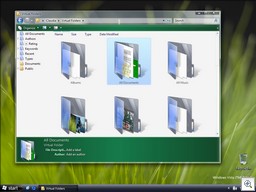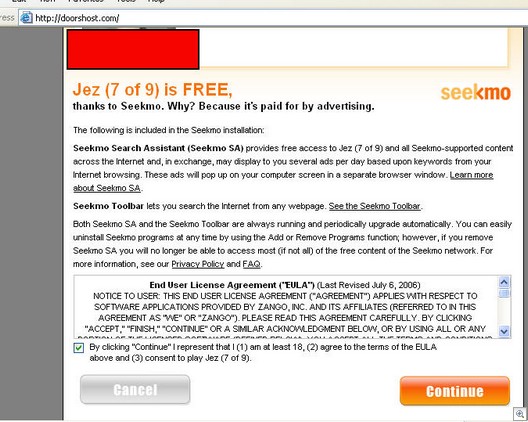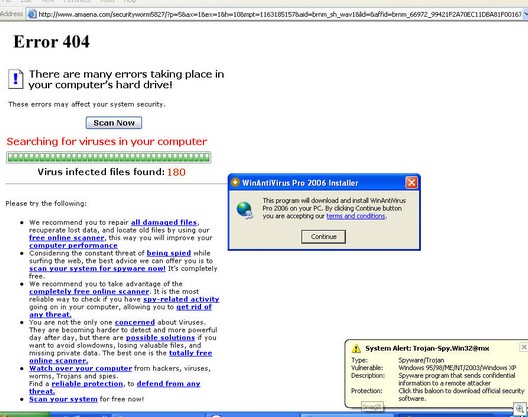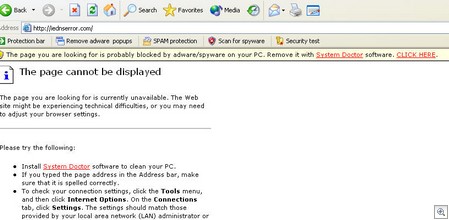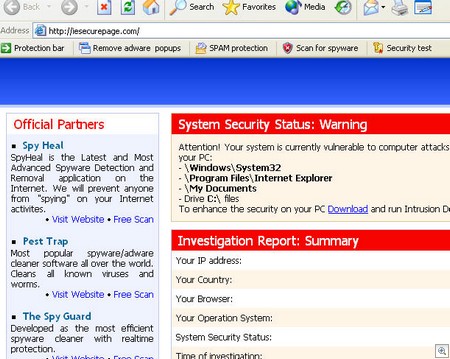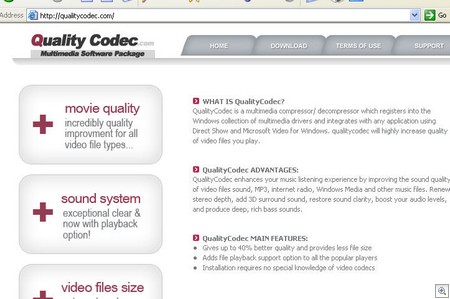Vista’s Virtual Folders make it easier to find what you’re looking for
Search functionality has been improved in Vista in several ways. One is the addition of virtual folders. Unlike “real” folders, they don’t actually hold any data, but they contain pointers to files located in different folders on the hard disk(s). Using the virtual folders feature, you can create collections of files based on whatever criteria you want. For example, I store articles I’ve written in folders according to the publication or company that commissioned them. But sometimes it would be more convenient to have them organized according to the topic (for instance, to be able to quickly access all the articles I’ve written about Voice over IP). Sure, I manually create a VoIP folder with shortcuts to the articles in their original folders, or I could do a keyword search every time I wanted the VoIP articles. But with Vista, when I do that search, I can save the results to a virtual folder so it’s there anytime I need it. Neat! Read more about virtual folders here.
Speaking of Vista— here’s the video that shows what it was supposed to be like.
How to change power options to avoid password prompt
Are you prompted to enter your username and password whenever your Windows XP computer resumes from standby? You can change the power options settings to avoid having to do this (but for best security practices, only make this change if your computer is in a physically secure location). Here’s how.
- Log on with an administrative account.
- Click Start | Run and in the Run box, type powercfg.cpl and click OK, or click the Power Options applet in Control Panel.
- In the Power Options dialog box, click the Advanced tab.
- Click to uncheck the box labeled Prompt For Password When Computer Resumes From Standy.
- Click OK.
QUESTION: Recently I’ve been getting a lot of weird email messages. They aren’t exactly spam – at least they aren’t trying to sell anything that I can see and they don’t contain any links for me to click. They’re just full of gibberish, what appears to be random words and phrases. Who in the world is sending these things and why? — Genie L.
ANSWER: You’re right: they aren’t spam, but they are sent by spammers. The point isn’t to get you to buy anything, but to get you to mark the unwanted messages as spam in order to confuse your Bayesian spam filters. Most anti-spam programs now use some form of Bayesian filtering – this is a way of using statistical methods to classify messages as spam (or not). The software “learns” to recognize what you consider to be spam based on the messages that you mark as spam. It’s a great idea and works well – except when the filters are “poisoned” by lots of messages that contain large amounts of random words and phrases that’s likely to appear in legitimate messages.
Bayesian poisoning messages sometimes consist of random words and sometimes a block of text from a literary work or the like. In either case, the goal is to confuse the filters and render them useless.
It’s also possible that even though they don’t contain links, some of the gibberish messages may contain web beacons. These are tiny, transparent (and thus invisible) graphics files placed in HTML email messages. When you open the message, your email client downloads the graphic from the sender’s server. This lets the spammer know that the email address is a “live” one.
If you try to extend your desktop to a second monitor while Windows Media Player is playing a video on the primary monitor, you may have problems, including sound with no video, or the video stops and won’t start again. This has to do with the DirectDraw implementation in Windows XP. There are a couple of workarounds, although they’re somewhat along the lines of the old joke: “Doctor, it hurts when I do this.” “Then don’t do that.” See KB article 325771 for more info.
Troubleshooting keyboard problems
Most of the time we take it for granted, but when your keyboard stops working correctly (or at all), it’s awfully hard to get anything done on your computer. Keyboard problems can range from a total loss of functionality to more confusing happenings, such as the wrong characters appearing when you type. For help in solving your keyboard troubles, see KB article 258826.
Until next week,
Deb Shinder, MVP
How Much Do You Trust Computers?
Last week, for the first time, I cast my vote in a national election with no piece of paper to back up my selections. We’ve had electronic ballots for a while, but the ones I used in the past printed out a paper ballot that was then dropped into a locked box just like the old punch card or even older “X marks the spot” types were. This time, the only record of my vote was in some computer’s memory.
How did that make me feel? Well, I have to admit it made me just a little nervous. Not because I had any difficulty understanding the system or picking my candidates – just the opposite. The process was straightforward and fast, a simple touch screen interface with a big flashing red button that you push to finalize your vote. It’s hard to see how anything could be any easier than that.
But, as I discussed in my November 7 personal blog post, pushing that button felt vaguely like pulling the lever on a slot machine. I wasn’t at all sure what, if anything, would happen. Would it really be recorded properly? And if not, how would anyone ever know?
It seems I’m not the only one who sees a down side to purely electronic voting. I heard the same distrust expressed by many others – including those on the winning side. And something I found telling was that so many of those who are disturbed by the new systems are not Luddites who know nothing about computers – they’re people (like me) who are intimately acquainted with how computers work and making their livings working with them.
Of course, that may be part of the problem. Like the doctor who sees disease every day and thus never trusts an illness to be “just a cold,” or a cop who deals with criminals so regularly that he suspects everyone of having criminal intent, maybe I just see so many malfunctioning computers that my perception of their reliability is skewed toward the negative side. After all, very few clients call me out to see how smoothly their networks or running and very few newsletter readers write to tell me their software is doing everything exactly as it’s supposed to.
No, people come to me when Windows won’t boot or their Internet connection goes down or Excel isn’t calculating properly or a virus shuts down their home LANs or their important documents won’t open or disappear into thin air just when they need them most.
Of course, we trust a lot more than just our votes to computers these days. We trust our lives to them – and luckily, some of them work extremely well. Commercial airliners today depend on computers for navigation and flight control. Medical treatment now depends heavily on computers. The medical records that doctors consult to make decisions about your health care are often stored electronically. Drug prescription information may now be sent via computer instead of “called in” to the pharmacy. Surgeons can operate “long distance,” controlling robotic arms by computer. And the information in the insurance company’s computer may determine whether or not you get admitted to the hospital or your treatment is approved at all.
We also trust our money to computers – most banking transactions are done electronically now. If you use direct deposit and pay your bills online, you may never see a paper version of your money (cash or check). The day will probably come when money as we know it is a thing of the past, and electronic bits and bytes are all we earn for our hard work.
Computerized information may determine whether you enjoy your freedom or get locked up. Who hasn’t heard the horror stories about people being arrested because of a warrant that showed up when a clerk ran a criminal history check on the computer?
Our cars run on computers, climate control in our malls and office buildings run on computers, and more and more, our homes are run by computers, too. And of course our national infrastructure is completely dependent on computers. They control the electrical grids, the municipal water supplies, the public sewer systems.
Many people began to question our growing dependency on our machines prior to the turn of the century. But despite dire predictions, Y2K turned out to be a bust – planes didn’t fall out of the sky, homes and businesses didn’t lose power, banks didn’t close … pretty much nothing happened. And computers have wedged their ways even deeper into our lives since then.
But are we precariously balanced on the edge of disaster? Would a large electromagnetic pulse (EMP) render all of our fancy technology unusable? Or is that just the stuff of science fiction novels? Since it’s never happened on a large scale, nobody really knows for sure.
It’s unlikely that anything short of such a disaster will cause our world to reduce its dependency on technology. Instead, computers are likely to become more ubiquitous as time goes on, and eventually they’ll just be built into everything, rather than functioning as standalone machines. That’s already true to a large extent. How does that make you feel?
Let us know what you think. Do you trust the computers on which your livelihoods and lives depend? Do you trust some types of computers more than others? Why? What are some examples of the positive effects of increasing computerization? What are the negative effects? Do you think we’re headed for a rude awakening some day when all the computers die? Let us know your opinions.
Deb Shinder, MVP
No, Bill Gates is not doing Zango porn
Nothing much to see here, just some run-of-the-mill domain fraud.
Doorshot(dot)com, a porn site that serves up hardcore porno videos (funded through Zango Seekmo installs), registers itself to Bill Gates.
Domain Name: DOORSHOST.COM
Registrant:
microsoftin
gates (gateshost @ gmail.com)
bolaklava 12 st.
NY, null,36568
US
Tel. +1.5635632145
Domain servers in listed order:
ns0.hqhost.net
ns1.hqhost.net
And here’s the Seekmo install screen from one of their vids:
Patrick Jordan
Media Motor officially pwned

FTC strikes again, shutting down the notorious Media Motor.
A U.S. district court has shut down an operation that secretly downloaded multiple malevolent software programs, including spyware, onto millions of computers without consumers’ consent, degrading their computers’ performance, spying on them, and exposing them to a barrage of disruptive advertisements. The Federal Trade Commission has asked the court to order a permanent halt to these deceptive and unfair downloads, and to order the outfit to give up its ill-gotten gains.
The FTC charged ERG Ventures, LLC and one of its affiliates with tricking consumers into downloading malevolent software by hiding the Media Motor program within seemingly innocuous free software, including screensavers and video files. Once downloaded, the Media Motor program silently activates itself and downloads “malware” – software that is intrusive, disruptive, and makes it difficult for consumers to use their computers.
Link here.
Alex Eckelberry
(Thanks Eric Howes)
More security scam hijack sites
Some new sites to look out for.
IP: 85.255.117.204
securecheck(dot)biz
IP: 85.255.117.204
yourguardonline(dot)biz
IP: 85.255.118.243
esafetypage(dot)com
IP: 85.255.118.246
eprotectpage(dot)com
IP: 85.255.118.246
esecuritypage(dot)com
Patrick Jordan
Scam jobs
There are lots of jobs advertised out there (through spam or other means) that are just an outright scam.
A good overview of the situation is at CareerBuilder.com. Don’t fall for these “jobs”. You might end up in jail.
Lured by convenience and seemingly easy money, more and more people are falling prey to job scams. Particularly vulnerable are people who want or need to work from home and those who are looking supplement their income. Those who fall victim can suffer serious consequences including debt collection and criminal charges.
Work-at-home scams are varied and can be more difficult to detect. They come in many different forms and change regularly. To protect yourself, it’s important to be aware of the various scams lurking and what to do if you suspect you discover one.
Link here.
Alex Eckelberry
(Hat tip to Andy Meyers)
WiFi exploit
George Ou gives a good overview of this new exploit that’s been published, with the fix.
This exploit potentially affects any wireless client using the Broadcom BCMWL5.SYS device driver (this exploit has been confirmed to work on version 3.50.21.10 of the driver).
This is a serious exploit, mitigated only by the fact that someone has to get into wireless range of your PC in order to attack your system (100 to 200 feet, more with a high-powered antenna). However, this does not mean that it should be taken lightly. Follow the instructions below to patch the driver.
From the Month of Kernel Bugs site:
The Broadcom BCMWL5.SYS wireless device driver is vulnerable to a stack-based buffer overflow that can lead to arbitrary kernel-mode code execution. This particular vulnerability is caused by improper handling of 802.11 probe responses containing a long SSID field. The BCMWL5.SYS driver is bundled with new PCs from HP, Dell, Gateway, eMachines, and other computer manufacturers. Broadcom has released a fixed driver to their partners, which are in turn providing updates for the affected products. Linksys, Zonet, and other wireless card manufactures also provide devices that ship with this driver.
Link here.
Linksys has an update to the driver, here, which is believed to work with any system using the Broadcom device driver (as most of you know, it’s common in the hardware world for one company to sell software or hardware to multiple different companies).
So if you’re running the Broadcom driver, update it as soon as possible.
Alex Eckelberry
Jim Allchin clarifies
Over the whole AV thing:
When the articles and blogs started appearing, I asked the PR folks to send me a copy of the transcript of the call so I could read it over and see if I said something I didn’t mean. After reading the transcript, I could certainly see that what I said wasn’t as clear as it could have been, and I’m sorry for that. However, it is also clear from the transcript that I didn’t say that users shouldn’t run antivirus software with Windows Vista! In fact, later in the call, I explicitly made this point again, because I had realized I wasn’t as clear as I should have been. It’s important for me that our customers are using the appropriate security solutions for the right situations, whether that’s security functionality integrated in the operating systems, or add-on products.
Link here, with more at Betanews.
Alex Eckelberry
Allchin on AV in Vista
I have no beef with Allchin, but this seems optimistic:
During a telephone conference with reporters yesterday, outgoing Microsoft co-president Jim Allchin, while touting the new security features of Windows Vista, which was released to manufacturing yesterday, told a reporter that the system’s new lockdown features are so capable and thorough that he was comfortable with his own seven-year-old son using Vista without antivirus software installed.
Link here (via realtech and Jeff Nolan).
Ok, Vista is a vastly improved security model, but what about the fact that probably well over 90% of all viruses come through email? You get an email that says “Please reset your password, open the attached file”, you open it and it’s a virus. It’s the user executing a virus. How will Vista protect against that? Furthermore, what about downloading a trojan?
Alex
Reminder: Watch that metadata
Yesterday, the American Bar Association gave the green light for lawyers to view metadata (extraneous information in a file such as who created it, what changes have been made, etc.). .
Lawyers who receive electronic documents are free to look for and use information hidden in metadata – information embedded in electronically produced documents – even if the documents were provided by an opposing lawyer, according to a new ethics opinion from the American Bar Association.
The opinion is contrary to the view of some legal ethics authorities, which have found it ethically impermissible as a matter of honesty for lawyers to search documents they receive from other lawyers for metadata or to use what they find, according to the ABA Standing Committee on Ethics and Professional Responsibility.
Link here (via beSpacific).
You can also see go to my previous posting on metadata, which included a link to the free Remove Hidden Data tool.
Alex Eckelberry
More fake codecs/security scam hijack sites
Deviously fake 404
Fake 404s for malware are not that uncommon, but check this one out from our palls at amaena(dot)com:
And at errorsdns(dot)com:

Patrick Jordan
More ridiculous scare tactics
Courtesy of Innovative Marketing…
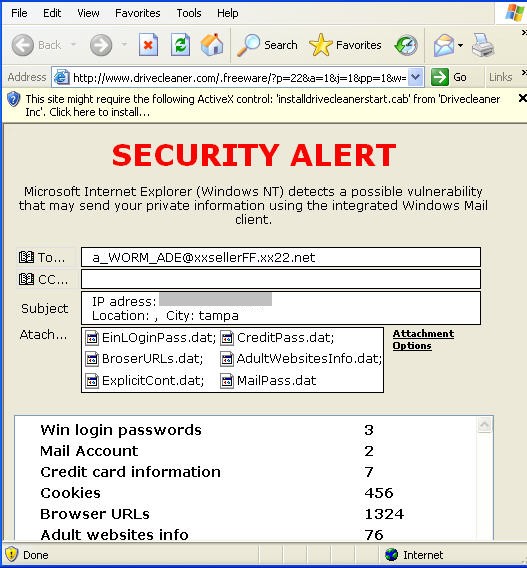
And while we’re at it, this is the group who first started with Internetantispy(dot)com (which opened the CDRom door to scare you into buying their application). Now we see amaena(dot)com using popup scare messages.
This is their latest URL: amaena(dot)com/vista, so it looks like they are getting ready to use the name Vista when Microsoft releases it.
Patrick Jordan
New draft guidlines for extended validation SSL certs

(From the CA/B forum, the green chrome that would be in IE 7 for EV SSL)
Help for phishing? The CA/Browser forum has published a draft guidelin for Extended Validation SSL:
EV SSL is a “’voluntary ‘standard’ that would impose rigorous authentication policies via participating certificate authorities, who will be independently audited for compliance. In return, websites with EV SSL would get special treatment in the browsers, including a “green chrome” in IE7 and an expanded security report showing the owner of the website. (Existing domain validation and organisation validation certificates would retain the simple ‘padlock’ display).”
Link here.
Alex Eckelberry
Getting your health insurance records
Not many people know this, but you have the right and abiltiy to get certain insurance records — and correct the information if it’s wrong. If you’re interested in getting a copy of your health insurance records, you can go to the Medical Insurance Bureau and request a copy. It’s not much fun going through the firm’s voice response system, but you’ll get your file with a bit of patience. (Note that if you have not applied for individually underwritten life, health, or disability insurance over the last seven years, MIB will not have a record on you.)
You can also listen to an interview with Michael Ravnitzky on the subject here.
Alex Eckelberry
1 in 10 fall to phishing?
I don’t buy this study. This would indicate that out of a billion users, over 100 million have fallen for a phishing scam. While plenty of people fall victim to phishing attacks, it’s nowhere near that number.
One in 10 internet users may be lured into handing over sensitive personal information such as a credit card number, by fraudulent “phishing” emails, research suggests…
Previous studies, including a telephone survey conducted by US research company Gartner in 2004, have indicated that about 5% of all internet users have fallen for phishing messages.
But Markus Jakobsson and Jacob Ratkiewicz at Indiana University, US, suspected this was an underestimation. The reasoned that some survey participants may not have realised that they have been stung by a phishing scam, or may simply be too embarrassed to admit to it.
The research methodology is interesting: This team actually created a fake phishing site to see who would respond.
New Scientist article, link here. More at beSpacific, including a study on ethical phishing experiments.
Alex Eckelberry
Example Myspace phish
Devious.
We start with a link in a post:
The link points to www(dot)logins-myspace-profiles(dot)n3t.nl, which opens an IFrame and loads the following site (www(dot)myspace-profileviews(dot)com/login/). This is a very realistic phishing site, complete with the same ads served on myspace.

More at Todd Towles’ site (thanks Todd for sending this to me).
Alex Eckelberry
Another zero day: WMIObjectBroker
This one has been out for a while but now it’s reported in the wild.
From SANS:
Rohit from Tippingpoint adviced us that he is seeing a large number of attacks from Russia using an un-patched vulnerability in the WMIObjectBroker ActiveX control (CVE-2006-4704). He is seeing it used as part of a drive-by download. Typically, the Trojan “Galopoper.A” is load.
There is no patch available at this point. Tippingpoint and the Bleedingthreats projects have signatures available to detect this attack. Rohit mentioned that there is a metasploit module for this vulnerability.
Microsoft link here, with workarounds.
Secunia here.
CERT here.
I’ll have more news as it comes out.
Alex Eckelberry
More fake scam sites
Sunbelt weekly TechTips
Virtual PC is free
I’ve had a number of inquiries recently about virtual machine software. It seems that a lot of folks either want to run Vista in a VM instead of installing it outright on their computers, or they have upgraded to Vista and want to run XP in a VM so they’ll have access to some old applications that don’t work with Vista. You’ll be happy to know that Microsoft’s Virtual PC (VPC) VM application is now a free download. You can install VPC 2004 on XP and run Vista in the VM, or you can install VPC 2007 (beta) on Vista and then install XP in the VM. Find out more here. There are also various free options at Vmware, here.
Vista: Hail the new Reliability and Performance Monitor
A new and useful feature in Windows Vista is the Reliability and Performance Monitor, which is a more sophisticated version of the Performance tool in XP Professional. You can open it in the same way: in the Run box, type perfmon, or you can click the Resource Monitor button on the Performance tab in Task Manager.
The top level node (Reliability and Performance) provides a nice resource overview, with graphs showing CPU, disk, network and memory usage. The Performance monitor is similar to XP’s; you can add counters for various performance objects (for instance, your processor) and measure performance in real time on a graph or output the performance information to a report. The “new guy on the block” is the Reliability Monitor, which shows software installs and uninstalls, application failures, hardware failures and Windows and miscellaneous failures. For example, the Monitor on my Vista machine shows that Outlook had a failure on October 21. A more technical overview is available here. (Thanks to Microsoft for the screencap above).
| How to keep tabs on the mouse pointer Sometimes it’s difficult to find the pointer arrow on certain desktop backgrounds, especially if you have vision problems. You can make it easier to keep up with the pesky pointer by following these steps:
|
Is Anti-Virus Software Ineffective?
Joanna Rutkowska, the same researcher whose BlackHat presentation last summer resulted in all the headlines alleging a security flaw in Vista (the vulnerability turned out to be in AMD’s virtualization technology) now is making headlines again. According to Rutkowska, she’s “not impressed” with any of today’s existing anti-virus solutions and wants to see a solution based on integrity checking of all system components. Read more here.
How to turn off the “New Programs Installed” notice
Whenever you install a new program in XP, the operating system may pop up a balloon saying that a new program has been installed and then the program itself is highlighted on the Start | All Programs menu. If you’re annoyed by this feature, it’s easy enough to turn it off. Just follow these steps:
- Right click the Start button.
- Select Properties.
- On the Start Menu tab, click the Customize button.
- Click the Advanced tab.
- Under “Start Menu Settings,” uncheck the box that says “Highlight newly installed programs.”
- Click OK.
You’ll also find a number of other Start menu items that you can configure here, such as how to display the Control Panel, My Documents, My Computer, and which items to include or not include on the Start menu.
Windows Media Player has encountered a problem and needs to close
If you get an error when you try to start Windows Media Player in XP, it may be because a third party application has installed an incorrect version of the Wmpui.dll file. Luckily you can fix the problem by registering the dll. For step by step instructions on how to do so, see KB article 555494.
Access denied when you delete folders from a mounted drive
If you try to delete folders that are stored on a mounted drive and send them to the Recycle Bin, you may receive an error message that says “Cannot delete
There are a couple of workarounds you can use to solve this problem. Read about them in KB article 243514.
You get an “access denied” message if you try to move files at the MS-DOS prompt
If you try to copy or move files to a CD-R or CD-RW drive using a command at the MS-DOS prompt, you may get a message that access is denied. Instead, you’ll have to use a different method to copy or move files for staging. You can find out what your options are by reading KB article 279118.
Deb Shinder, MVP
